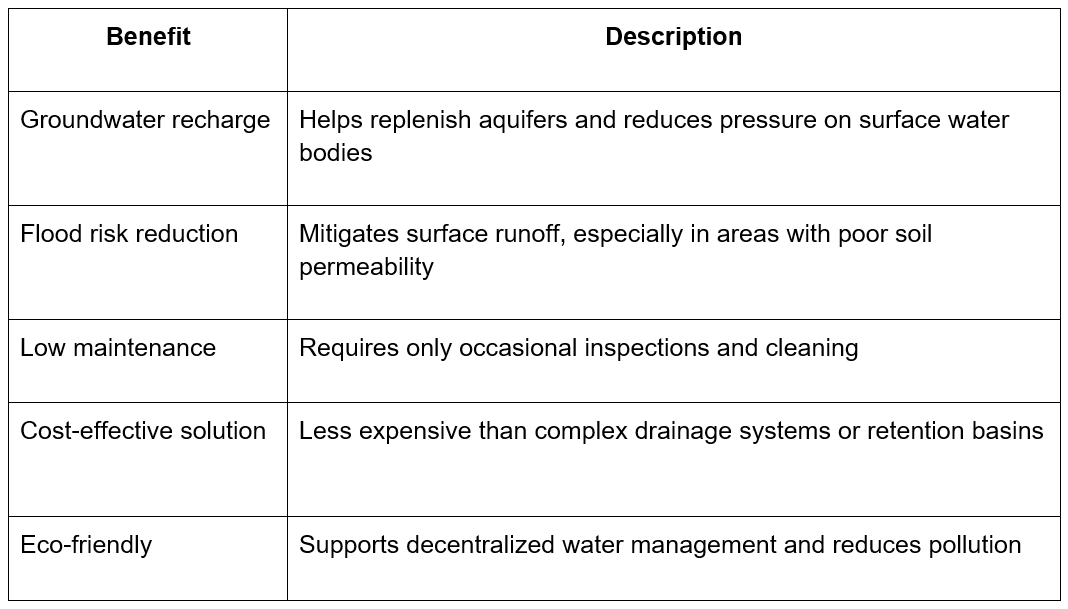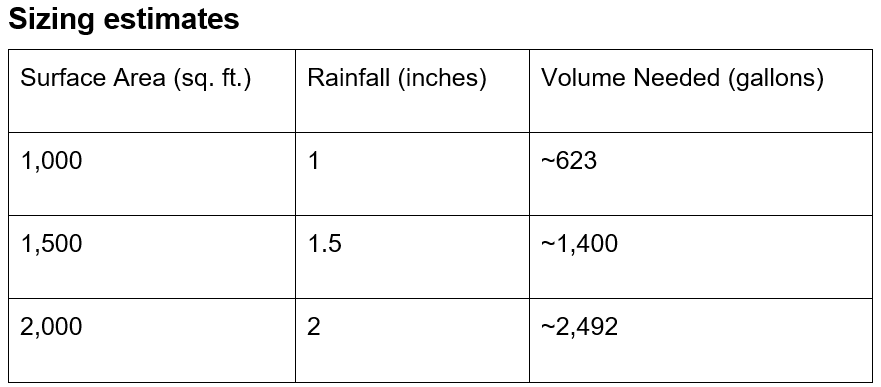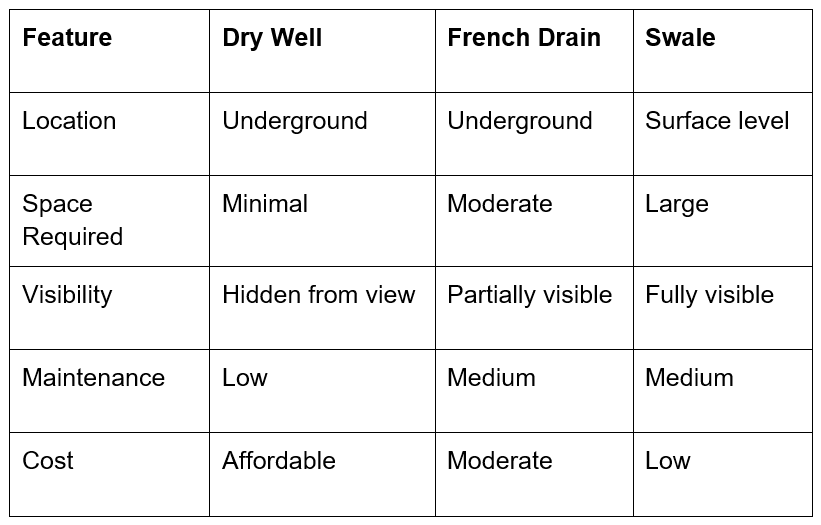Managing stormwater with dry wells — a practical guide for urban and residential spaces
August 6, 2025
Sponsored Content
As climate change drives more frequent and intense rainfall events, stormwater management has become a top priority for municipalities, engineers, landscape architects, and homeowners alike. Without proper infrastructure, rainwater can accumulate rapidly, leading to flash floods, soil erosion, foundation damage, and pollution of local waterways. To mitigate these risks and promote sustainable land use, innovative yet simple drainage methods are gaining popularity. Among them, the dry well stands out for its effectiveness, low maintenance, and adaptability.
What is a dry well?
A dry well is an underground structure designed to collect and slowly disperse stormwater into the surrounding subsoil. It acts as a holding tank, storing excess rainwater from roofs, driveways, or paved surfaces, and then allowing it to infiltrate into the earth over time. This mechanism reduces the burden on municipal sewer systems, prevents runoff from pooling on the surface, and helps replenish groundwater supplies.
Modern dry wells are typically made of plastic or concrete, with perforated walls to facilitate drainage. These structures can be installed beneath lawns, gardens, parking lots, or permeable pavement. One particularly efficient system is the modular dry well, which is easy to install and configure for both residential and commercial needs.
Why use a dry well - benefits and advantages
Dry wells offer a wide array of environmental, financial, and practical benefits. Some of the key advantages include:

In addition, dry wells can contribute toward LEED certification and are often eligible for stormwater fee credits from local authorities.
How does a dry well work?
A dry well receives water from an inflow source such as a gutter downspout or storm drain and channels it into a chamber made from perforated material. The chamber temporarily holds the water before gradually allowing it to percolate through the surrounding gravel or sand back into the ground.
Basic components:
● Inlet pipe: brings water into the dry well from the surface.
● Main chamber: stores the water temporarily.
● Perforated walls/base: allows water to seep out into the subsoil.
● Filter fabric and gravel bed: helps filter debris and supports drainage.
This process mimics natural water cycles and minimizes water-related damage, especially during heavy rain events.
Planning for installation - key design considerations
Proper planning ensures the efficiency and longevity of a dry well system. The following parameters must be evaluated during the design stage:
● Soil permeability: conduct a percolation test to assess how quickly water drains through your soil.
● Location: ensure placement is at least 10 ft. from foundations and 3 ft. from property lines.
● Capacity: calculate runoff based on the roof or surface area and expected rainfall.
● Depth and size: deeper wells accommodate larger volumes but require more excavation.
Overflow management: include backup solutions like overflows or secondary wells.

These calculations help avoid under-sizing, which may lead to overflowing during intense storms.
Comparing dry wells with other drainage methods
It’s helpful to understand how dry wells compare to alternative methods such as French drains, retention ponds, or swales.

Dry wells are a popular choice in areas with limited space or where a discreet, low-profile solution is needed.
Use cases in residential and commercial settings
Dry wells can be integrated into a wide range of site plans, including:
● Residential yards: manage water from rooftops, garden beds, or patios.
● Commercial plazas: handle runoff from parking lots and walkways.
● Urban developments: use modular units beneath streets, bike paths, or green roofs.
● Industrial sites: control water near loading docks or large impermeable areas.
Additionally, by channeling water into the soil, dry wells help avoid oversaturation, minimize mosquito habitats, and maintain the functionality of landscaped spaces.
Maintenance tips for longevity
Dry wells require very little upkeep, but here are a few practices to ensure optimal performance:
● Inspect seasonally: look for debris or slow drainage.
● Clean inlets: keep downspouts and grates clear of leaves and sediment.
● Check after storms: ensure water is draining properly and there’s no surface pooling.
When properly installed, most systems can operate for many years with little need for maintenance.
Policy and sustainability impact
Municipalities are increasingly encouraging the use of on-site water retention as part of sustainable urban planning. Dry wells help reduce the strain on storm sewers, particularly during peak rainfall events, and support water conservation. In some cities, stormwater regulations may mandate or incentivize the use of permeable solutions such as dry wells.
They are also an integral component of Low Impact Development (LID) practices and Sustainable Drainage Systems (SuDS), aimed at mimicking the natural water cycle in built environments.
Summary
In an era of increasing urbanization and climate variability, dry wells represent a reliable, low-cost, and environmentally responsible method of stormwater management. They help homeowners, businesses, and planners deal with runoff efficiently while supporting sustainable practices and reducing the need for complex infrastructure.
Dry wells are particularly useful in locations where land is limited or costly, as they manage stormwater without taking up functional space. Because they remain hidden beneath the surface, they can be installed in both new developments and retrofit projects without affecting the aesthetics of a site. This hidden utility also makes dry wells ideal for public areas where unobstructed use and visual design are priorities, such as parks, school campuses, and recreational zones. Their long service life and compatibility with other green infrastructure tools make them a wise investment for environmentally conscious planning.
Whether you’re retrofitting an older home or developing a new site plan, including dry wells in your drainage strategy ensures resilience, affordability, and compliance with evolving environmental standards. To explore more tools and technologies for effective water management, visit https://vodaland.ca/.